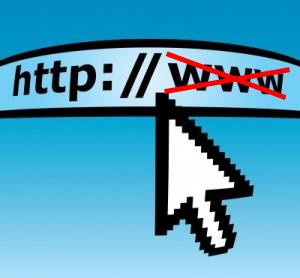 Most cloud services require you to create a CNAME record for your custom domain in order to direct traffic to the cloud-hosted site. Your example.com site may actually be hosted at example.cloudapp.net. For on-premises hosting you would know the IP address of your server (or the load balancer) and can use an A record, but that is not the case on Azure or AWS: these require that pesky CNAME.
Most cloud services require you to create a CNAME record for your custom domain in order to direct traffic to the cloud-hosted site. Your example.com site may actually be hosted at example.cloudapp.net. For on-premises hosting you would know the IP address of your server (or the load balancer) and can use an A record, but that is not the case on Azure or AWS: these require that pesky CNAME.
CNAME records don’t support naked domains. Your site has to be at www.example.com, it can’t be at simply example.com, the root, or apex, record of your domain. On the other hand, A records can only support IP addresses.
There are a number of solutions to this problem, so I’ll list some here:
1. Use HTTP Redirection that redirects example.com to www.example.com via a 301. Not all DNS hosters offer this. This is not ideal, but at least your site will be found.
2. Use a redirect service like wwwizer. Point your naked/root domain to 174.129.25.170 and all requests to example.com will be redirected to www.example.com. It works; I use it. This is very similar to using a DNS hoster’s HTTP redirect.
3. Use the cloud service’s own forwarding:
- AWS allows DNS forwarding using Route53 and Elastic Load Balancer. Read more here.
- Google Apps forwarding of naked domains to your Google-hosted site. More here.
- Use Azure’s own…oh wait, Azure doesn’t offer this yet.
- Instead, you can use DNS Azure, a $2.99/month dynamic DNS on steroids, specifically for Azure. This is faster than the potential multiple redirects of the other solutions.
4. Use DNSMadeEasy’s newly-created ANAME record. This works like a hybrid between an A record and a CNAME: You can forward the root (aka apex, aka naked) domain record to another fully qualified url (like example.cloudapp.net). In practice, this is very similar to the service offered by DNS azure. Both do direct forwarding to your server’s actual IP address, dynamically and instantly updated when the IP address changes. Unlike DNS Azure this obviously is not tied to Azure, or to any cloud service. It’s regular DNS hosting as well.
Let your domains go naked! It’s liberating.
Image copyright (c) 123RF Stock Photos






